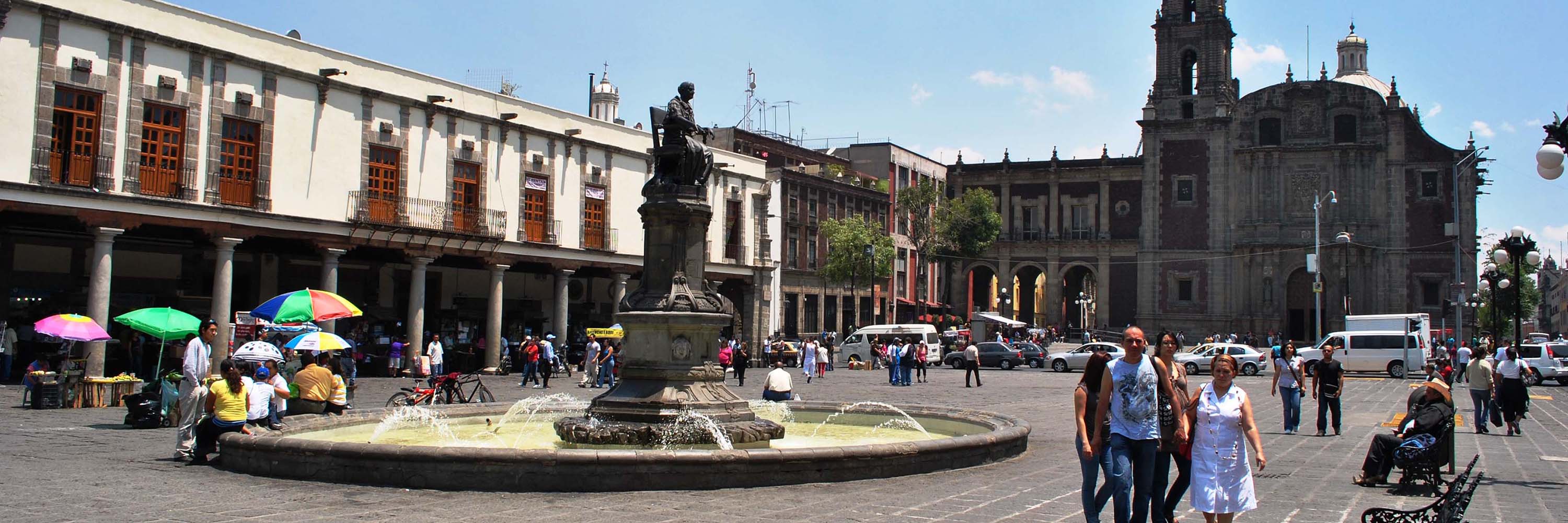
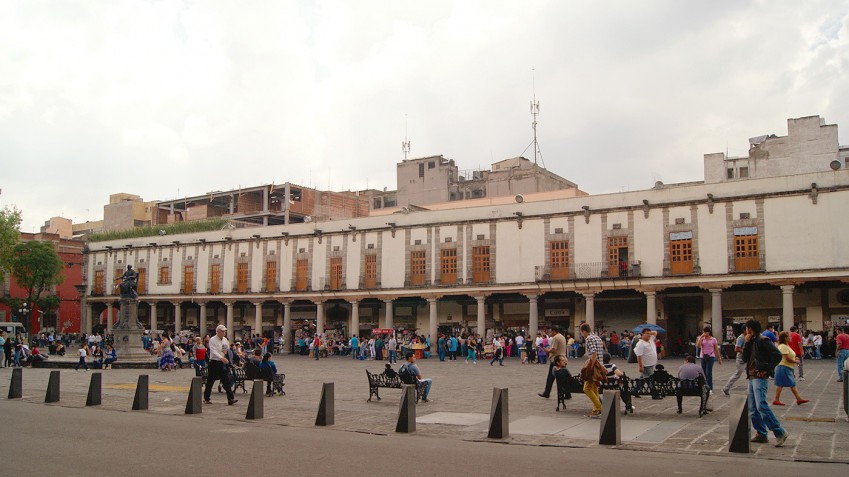
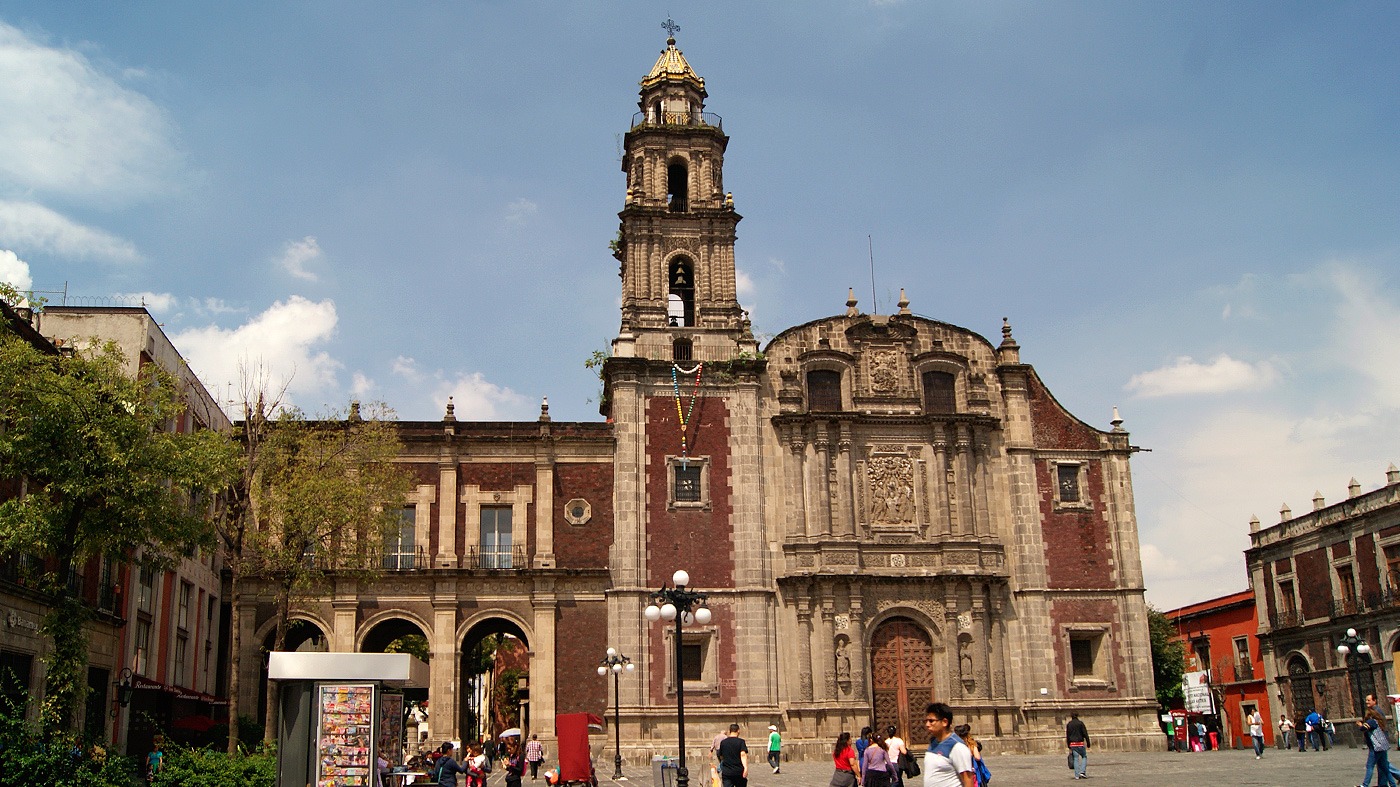
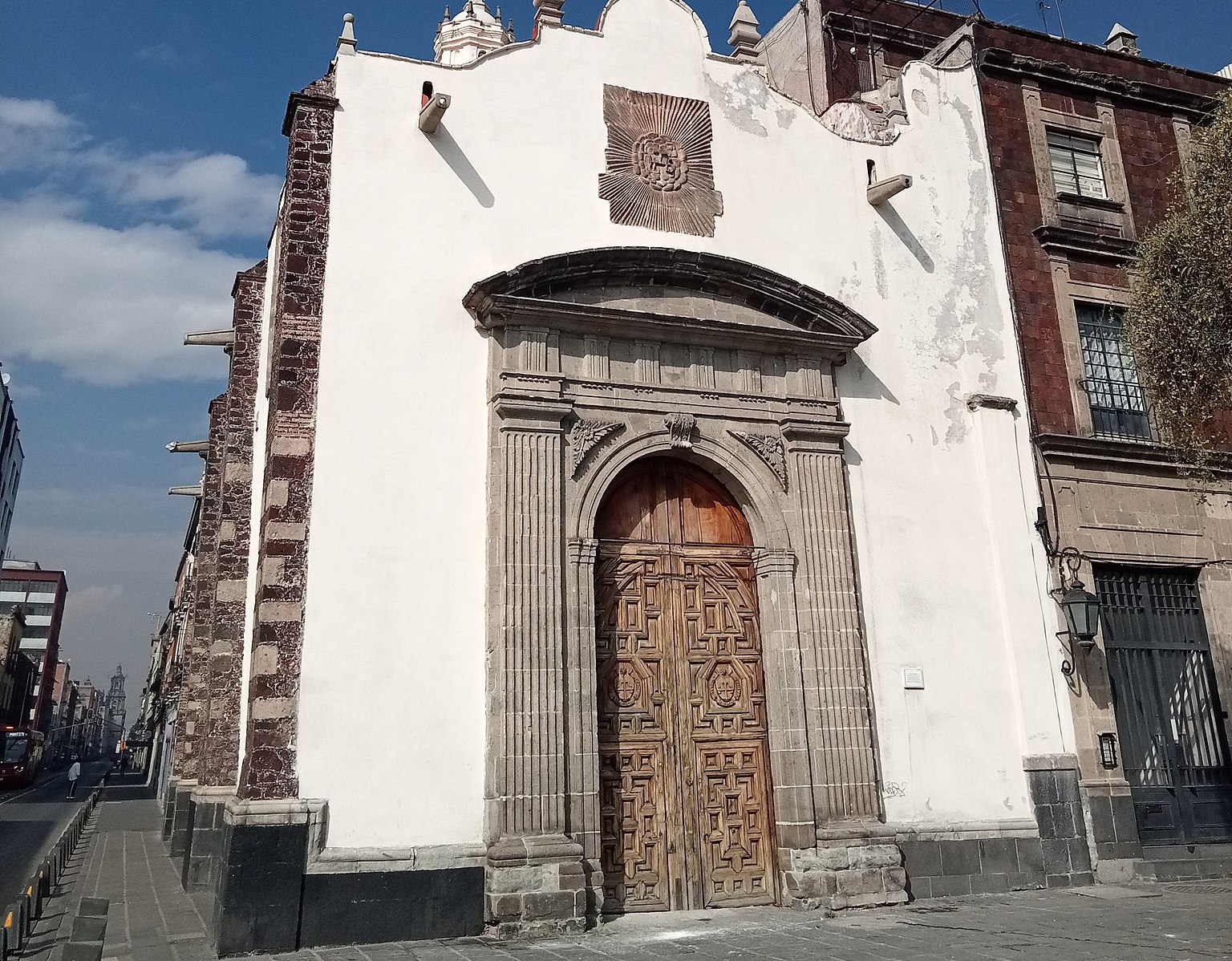
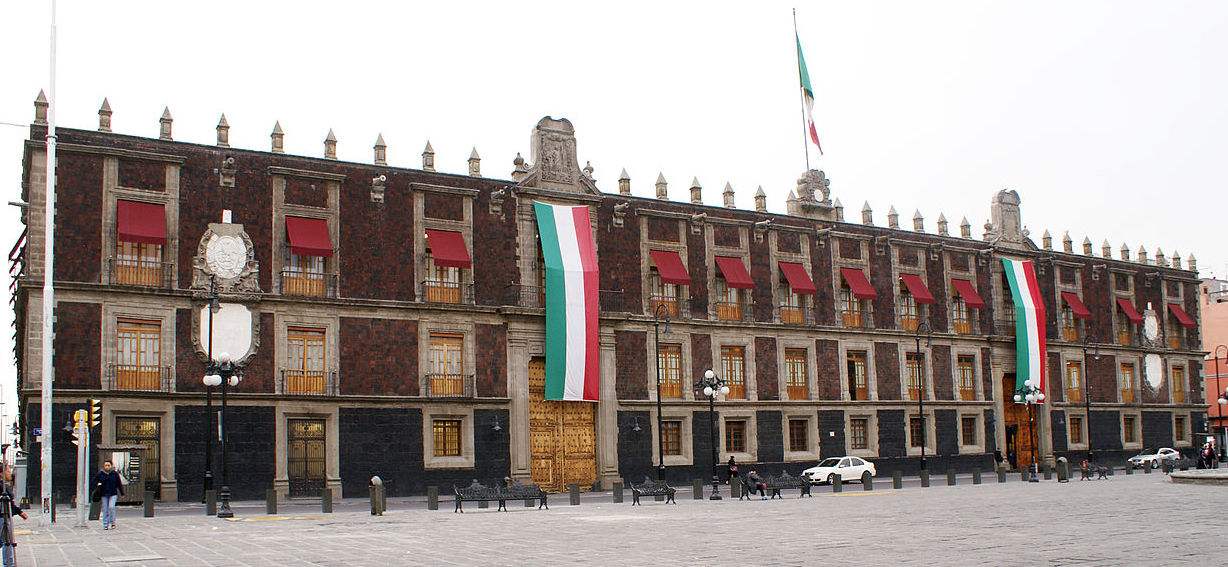

La Plaza de Santo Domingo es una de las primeras “otras” plazas del centro de la ciudad que encontrarán los visitantes internacionales después del propio Zócalo. Es mucho más pequeña, pero da una buena idea de la capital colonial, si no de la antigua ciudad que la precedió.
De hecho, la plaza es el legendario hogar de Cuauhtémoc, que se convirtió en el último emperador azteca en 1520. Rápidamente pasó a manos de los dominicos, que gobernaron la zona durante la mayor parte del periodo colonial. Y la plaza en sí puede entenderse, ya que está dominada por el Templo de Santo Domingo al norte, como un atrio tradicional. El espacio abierto frente al templo se utilizaba para la evangelización y otros esfuerzos de conversión en el extremo norte de la capital virreinal.
Al oeste, el Portal de Santo Domingo tiene partes que datan del siglo XVII. Al este, el edificio de las Antiguas Aduanas es hoy parte del Museo de la SEP , con espectaculares murales en su interior.
La plaza más pequeña al norte inmediato, y directamente frente al Templo se llama hoy Plaza 23 de mayo. Día del Estudiante, es cuando se conmemora el movimiento estudiantil de 1929 que llevó a la autonomía de las universidades mexicanas. Hay más información sobre ese movimiento en el Palacio de la Autonomía de la UNAM, justo al lado del Zócalo.
La escultura de Josefa Ortiz de Domínguez, de 1890, es obra del escultor italiano Enrique Alciati. Es más conocido en Ciudad de México por haber creado el Angel de la Independencia, aunque también es el creador de otros numerosos monumentos a los lados del Paseo de la Reforma.
La Plaza de Santo Domingo es sólo el centro de un barrio histórico por lo demás inminentemente transitable. Los visitantes internacionales llegan a través del Metro o simplemente caminando desde la esquina noroeste del Zócalo.
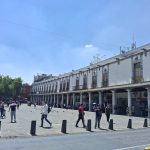 La historia se confunde con la leyenda al describir este espacio, se presume que era el área de jardines del Palacio de Cuauhtémoc y corrió el rumor de que en sus estanques había escondido un tesoro. Con el tiempo el espacio se conservó como área pública y sirvió al frontero convento de Santo Domingo y al Tribunal de la Inquisición para hacerlo escenario de los Autos de Fe, aquellas tristes ceremonias públicas donde se sentenciaba y ajusticiaba a los reos de la Inquisición. Durante el ritual de ceremonia para recibir a los Virreyes, la capital ofrecía dos arcos de triunfo al recién llegado, uno se levantaba en la Plaza del Empedradillo, a un costado de la Catedral y otro se erigía en la Plaza de Santo Domingo. Era sitio de amplia actividad de transportes, al tener como vecina a la Real Aduana del Virreinato. La Plaza también fue punto nodal para los coches de alquiler en la capital.
El día de hoy se conserva como conjunto arquitectónico la plaza y los edificios aledaños, al centro se ubica una fuente con la estatua de doña Josefa Ortiz de Domínguez, heroína de la gesta de independencia, la escultura es obra del italiano Enrique Alciati y fue colocada en 1890.
La historia se confunde con la leyenda al describir este espacio, se presume que era el área de jardines del Palacio de Cuauhtémoc y corrió el rumor de que en sus estanques había escondido un tesoro. Con el tiempo el espacio se conservó como área pública y sirvió al frontero convento de Santo Domingo y al Tribunal de la Inquisición para hacerlo escenario de los Autos de Fe, aquellas tristes ceremonias públicas donde se sentenciaba y ajusticiaba a los reos de la Inquisición. Durante el ritual de ceremonia para recibir a los Virreyes, la capital ofrecía dos arcos de triunfo al recién llegado, uno se levantaba en la Plaza del Empedradillo, a un costado de la Catedral y otro se erigía en la Plaza de Santo Domingo. Era sitio de amplia actividad de transportes, al tener como vecina a la Real Aduana del Virreinato. La Plaza también fue punto nodal para los coches de alquiler en la capital.
El día de hoy se conserva como conjunto arquitectónico la plaza y los edificios aledaños, al centro se ubica una fuente con la estatua de doña Josefa Ortiz de Domínguez, heroína de la gesta de independencia, la escultura es obra del italiano Enrique Alciati y fue colocada en 1890.
Ruta del Corazón de México: Ruta Santo Domingo - Santa Catarina
< < Templo de Santo Domingo | Secretaría de Educación Pública > >
Proyecto “Corredor de Cultura Digital”.
Nombre de la investigación: Investigación Centro Histórico, Monumentos, Edificios y Puntos de Interés (2023)
Dirección de investigación y diseño de Rutas: Acércate al Centro A.C. Guadalupe Gómez Collada
Coordinación e investigación histórica: Fideicomiso del Centro histórico Dir. Maestra Loredana Montes
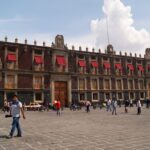
Cercano a 0.01 kms.
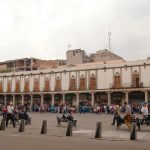
Cercano a 0.04 kms.
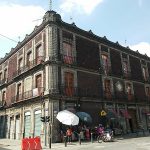
Cercano a 0.06 kms.
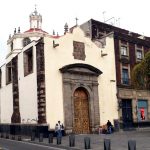
A remarkable chapel on the edge of the Plaza de Santo Domingo . . .

Una visión fascinante y muy real del siglo XVII en la Ciudad de México.

El antiguo edificio de la aduana hoy muestra parte de la extensa colección de arte de la SEP.
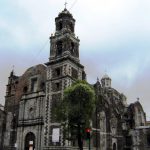
Uno de los templos barrocos antiguos más espectaculares de la Ciudad es la iglesia parroquial de La Lagunilla.

Still one of the most magnificent of center city palaces, that of the Inquisition is not one to miss.